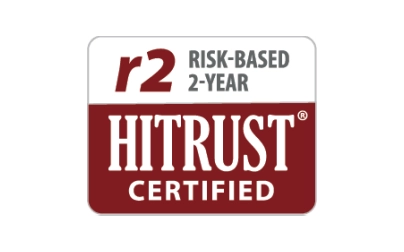Telehealth—and telehealth nurses—aren’t new. Nurses have been guiding and caring for patients via nurse advice lines and nurse-provided phone triage for years. But as telehealth utilization in all its current forms has grown exponentially (and now stabilized), it’s time to revisit the role of a registered nurse.
The COVID-19 crisis has proven that telehealth can improve access to care. But the volume of telehealth visits has also at times threatened to overwhelm healthcare organizations, from clinical practices to managed care health plans. Most on-demand telehealth services are “quarterbacked” by physicians. A patient clicks to connect, answers a few text-based questions, then joins the queue for an MD e-consult. As telehealth becomes even more popular, that model is neither the most efficient nor sustainable.
This is where nurses can play a crucial role.
Efficient care at a lower cost
By leveraging experienced telehealth registered nurses (RNs) prior to a virtual physician e-consult, organizations can ensure effectively triaged care and help patients seek the appropriate setting for that care. At Carenet Health, our data has shown that at least 40% of telehealth visits don’t require physician interaction and can be treated at home with guidance from an RN. Nurse-provided patient triage can not only alleviate some of the burden on physicians who are already stretched thin, but also help patients avoid unnecessary primary care appointments or divert some emergency department and urgent care visits – which significantly reduces costs.
⇒ Proof in point: One large health plan implemented symptom triage delivered by RNs prior to a virtual physician consult. Of symptomatic callers with pre-intent to visit the emergency department (ED), 87% were redirected to a less emergent level of care. Only 20% of calls resulted in the RN referring the patient to the on-demand telehealth physician service. The health plan also saw $12 million in annual savings, which amounted to an average savings of $100 per interaction per member. Overall, the nurse triage line delivered a 3:1 return on investment to the health plan. (Full case study is available here.)
In another Carenet study, we found that patients were very often wrong about the level of care they needed. Data showed 57% of patients were ultimately redirected to a different level of care than what they thought they needed at the beginning of a telehealth nurse interaction.
Improved patient experience
Long wait times are always a drawback for patients, no matter where they’re seeking care. While telehealth has helped reduce the inconvenience of traveling and waiting in a doctor’s office or ED to be seen, it hasn’t eliminated it. A study published in the Journal of Patient Experience, which examined the telehealth experience of patients with COVID-19 symptoms in 2020, found the average wait time for online physician visits was 75.5 minutes. Some patients experienced wait times as high as almost four hours (222.5 minutes).
As the number of patients seeking care in the future via telehealth rises and the nation’s physician shortage also grows, the virtual patient experience could be at risk. A dedicated nurse triage team could be a path to improving the experience by engaging with patients prior to their wait for an MD—providing convenient access to high-quality 24/7 clinical care.
A single point of access to all forms of virtual care can have an impact, as well. For instance, in the Carenet Health Virtual Clinic model, patients have a streamlined front door to virtual care, similar to a traditional provider clinic. Intake coordinators efficiently handle calls, which are then triaged by telehealth-trained RNs and elevated to physician e-consults when appropriate. The result is a more seamless, convenient and stress-reducing experience for patients. Additional types of virtual care could be added to the point of entry, such as crisis behavioral health support.
⇒ Proof in point: One of the nation’s largest health plans saw a 96% patient satisfaction rating when they transitioned to an upfront nurse triage solution. At Carenet, the average score across all clients for patient satisfaction after a nurse interaction is 99%. In contrast, the overall customer satisfaction score for physician-on-demand services is 86%, according to the latest study by J.D. Power.
Compassionate, high-quality care
Having a team of experienced nurses available around the clock to assess symptoms and provide site and course of care recommendations can help fuel better patient decision-making and better outcomes. One of the keys to those goals is staffing the team with skilled and well-trained clinical professionals. At Carenet, for example, our telehealth RNs have an average of 15 years of clinical experience and 5 years of telehealth experience, and they’re trained in empathy, influence, state/federal regulations, URAC standards and how to work with diverse populations.
⇒ Proof in point: A typical physician e-consult can address fewer than 50 types of patient concerns. Triage nurses using Schmitt-Thompson® evidence-based guidelines for telehealth are trained on 700 adult and pediatric conditions.
Telehealth is evolving—the role of nurses should, too
As telehealth becomes more popular, the role of a skilled telehealth nurse is an asset that must be further and more strategically explored. The impact of nurse triage and support is poised to make virtual care more sustainable, cost-effective and satisfying for consumers.
Fortunately, a good first step is a fairly easy one: Consider enhancing your current MD-on-demand solution by adding a proven nurse triage service upfront. Contact us today if you’d like more information on how that can be accomplished for your organization.


